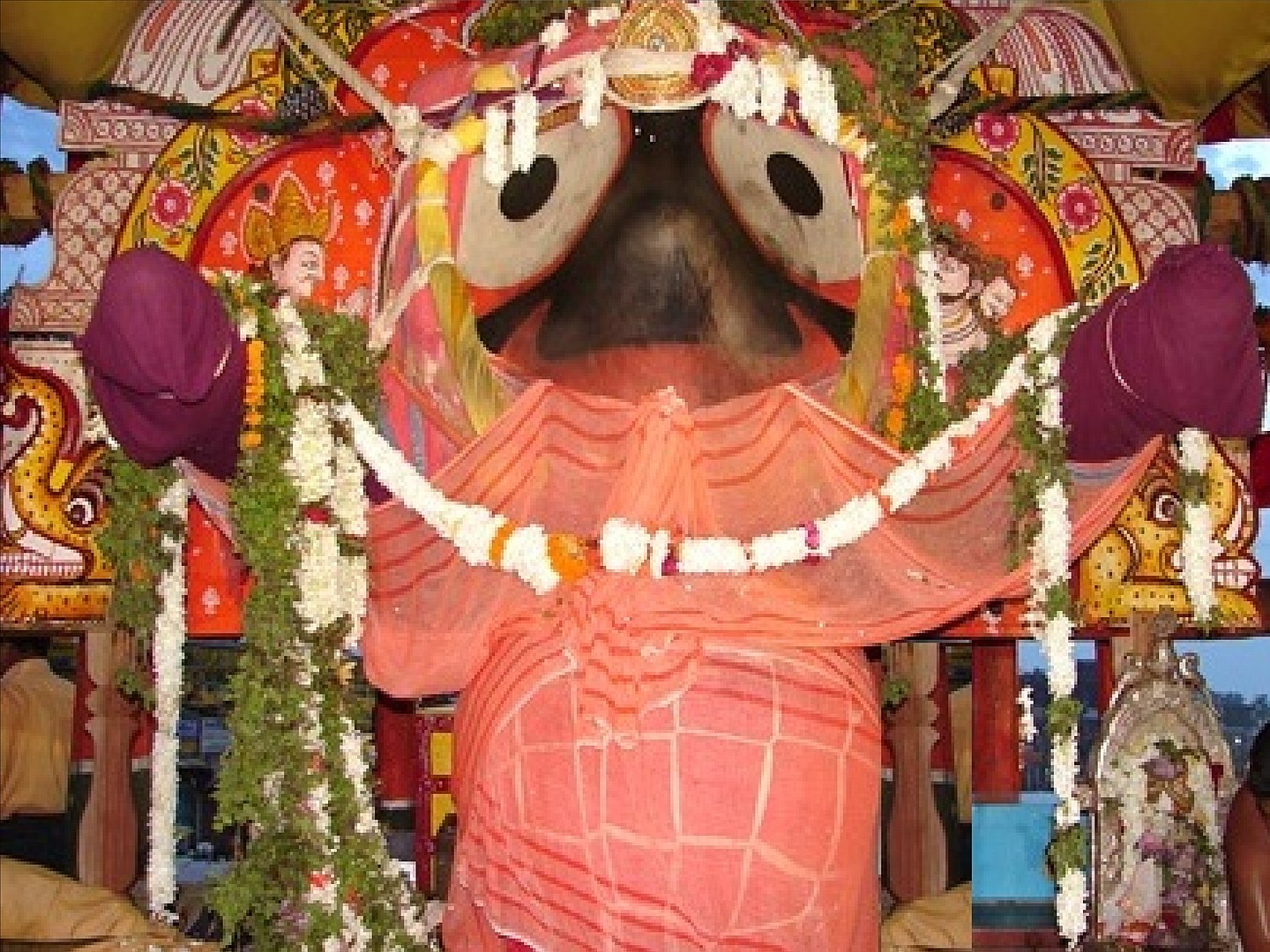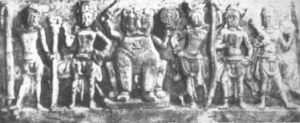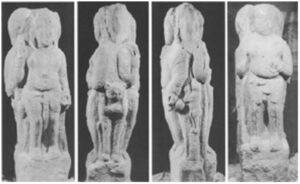Lord Jagannath, as the name connotes, is the Lord of the Universe. He is the unifying force, who binds people of different faiths, castes, communities and customs with the thread of love. The spirit of tolerance and catholicity, which are the basic tenets of the cult of Jagannath also form the basis of our social and cultural milieu1.
The cult of Jagannath is a remarkable synthesis of Buddhism, Saivism, Saktism and Vaishnavism2. Like different rivers falling into ocean, several streams of faith have merged in the worship of Lord Jagannath. He is also called Purusottama, the Supreme self of the Bhagvat Gita. He is also the Patitapavan, Redeemer of the fallen or dalits3.
Since ancient times, Puri, has been known as Srikshetra, Neelachal – Dham and Sankha Kshetra. The layout plan of this sacred city is often described as resembling the shape of a conch shell. Skandapuran, in its Purusottama Mahatmya, even mentions different deities residing in various parts of conch-shell4. The majestic temple of Jagannath occupies the navel or centre portion of the Sankha Kshetra. It continues to be one of the “Chaturdhams” or four important religious centres of India, the other three being Badrinath, Dwaraka and Rameswaram.
Lord Jagannath is not only worshipped in India, but also abroad. That is why He is called as the Lord of Universe. The great English historian W.W. Hunter writes5 – “But the true source of Jagannath’s undying hold upon the Hindu race consists in the fact that He is the God of the people. As long as His towers rise upon the Puri sands, so long there will be in India a perpetual and visible protest of equality of man before God.”
Lord Jagannath opens his arms and blesses to all irrespective of caste, creed, sex and religion. The doors of His temple are open to all. There are no differences between Brahmins and Sudras. Both do not hesitate or eat cooked food or Mahaprasad of Lord Jagannath to eat together inside the temple. Exchange of Mahaprasad between two persons belonging to two different castes or classes binds them together6. This indeed is a unique feature of Jagannath Culture.
Many ancient religious leaders have visited the seat of Lord Jagannath in the past. The great Adi Shankaracharya came to Puri in the 19th Century. Ramanujacharya visited Puri and set up Emarmath. In the 16th Century, Shri Chaitanya visited Puri and preached Vaishnavism7. Guru Nanak visited this holy shrine in 1506. The Gurudwara Bauli Sahib at Puri bears testimony to the holy presence of Guru Nanak. Sant Kabir also paid a visit to Puri.
The three deities i.e., Lord Jagannath, and Lord Balabhadra and Devi Subhadra are worshipped here along with Siva and Durga. The three sects of Vaishnavism, Saivism and Saktism are assimilated here together. Jagannath cult is free from all types of regional narrowness. It believes in universality and not in sectarianism. Thus, he has been worshipped by the primitive tribals, Dravidians, Aryans, Hindus, Jainas, Buddhists, Sikhs, Saktas and Saivites8.
The age old car festival of Lord Jagannath is celebrated in the month of June or Ashada every year. Although the car festival is celebrated all over Orissa and in different parts of the country and even abroad, the main attraction for the devotees is the Car Festival celebrated at Puri, the seat of Lord Jagannath. Lakhs and lakhs of pilgrims from all over the country and some from abroad gather at Puri to witness the World famous Car Festival which is the most celebrated festival of Lord Jagannath9.
On this occasion, the three images of Lord Jagannath, Balabahdra and Subhadra are brought in a procession from Shri Mandir, seated on majestic wooden chariots and drawn to the Gundicha Mandir or the garden house by people of different sects. The three majestic decorative chariots are drawn along a three kilometers road called Grand Road or Bada Danda, with great pomp and grandeur10.
The Ratha Jatra or Car Festival is the symbol of Universal brotherhood and during it people forget their individual identity and merge in an ocean of humanity. This great festival is meant for universal brotherhood, communal peace and harmony. It stands for national and international integration. It tolerates all races, religions, customs and cultures11.
The Maharaja of Puri sweeps the three chariots during the Car Festival, which is the symbol of a casteless society and equality. Even the Mahaprasad, Nirmalaya or dried rice12, the food offered to the deities can be taken together without any distinction of caste or creed. Devotees irrespective of caste, creed or religion could go upto Him and embrace the chariot during the car festival.
References
1. B.N.Pande, On Development and National Integration, Bhubaneswar, 1984, p.175.
2. Ibid.
3. Ibid.
4. Skandapuran, Uttarkhand, Chapter-55, Calcutta, 1999, p.11.
5. W.W.Hunter, History of Orissa, Vol.II London, 1872, p.85.
6. B. K. Sarma, “Jagannath Cult : Its Unique Features” in South Indian History Congress Proceedings, Rajapalayam, 2007, p.603.
7. R.K.Das, Legends of Jagannatha Puri, Bhadrak, 1978, p.106.
8. B.K.Sarma, Op.Cit., p.605.
9. M.M.Tripathy, A Brief Look at Sri Jagannath Temple, Puri, 1995, p.86.
10. R.L.Mitra, Antiquities of Orissa, Vol.II, New Delhi, Reprint, 1984, p.234.
11. B.N.Pande, Op.Cit. pp.175-176.
12. M.M.Ganguli, Orissa and Her Remains : Ancient & Medieval, Calcutta, 1912, p.168.
Dr. N.P. Panigrahi
Lecturer in History, M.K.D.College,
Gurandi, Gajapati, Orissa.
Source: Journal of Indian History and Culture, September 2008.




